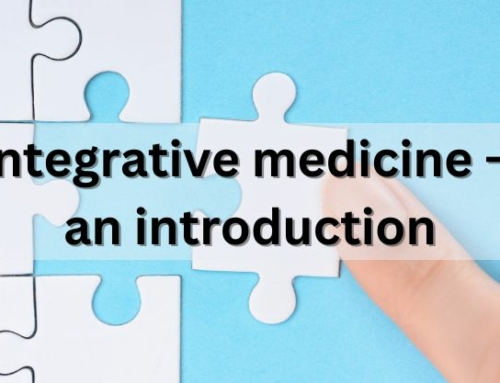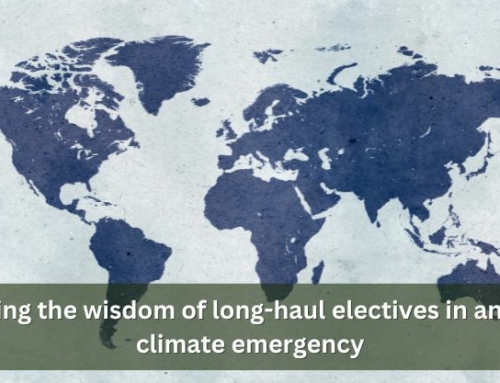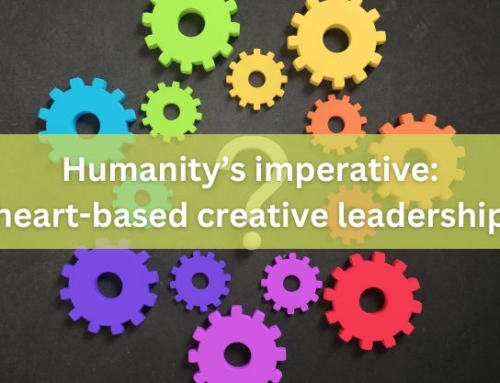A fortunate man: the vulnerability of vocation
David Zigmond, GP
Published in JHH12.2 – Works that reconnect
I was at medical school in the 1960s when this searchingly descriptive and philosophical study of a country GP was written. In the early 1970s I became captivated by Michael Balint’s work – explorations of encoded meanings that lie behind our ‘objective’ constructions of diagnoses and treatments.This, I found, was akin to holism – the pursuit of unobvious connections and larger patterns. In the 1980s my curiosity turned to the complex world of doctor–patient relationships, and thence to the disturbed and disturbing world of doctors’ hidden vulnerability, so often tragically self-destructive.
I did not know that all these interests were so foreshadowed in A Fortunate Man. I did not read it then: it is a privilege to do so now.
We, too, are now fortunate. Nearly 50 years after A Fortunate Man was first published, this unusual descriptive testament and poetically suffused analysis of a country doctor is now republished. What is it? And what does it now offer our very different world of healthcare providers, purchasers and consumers? This essay-lengthened review explores a work of substantial and enduring importance.
First, the story behind the book’s content and format.
In the mid-1960s the novelist and essayist, John Berger was living in the Forest of Dean area and consulted a single-handed, remotely located GP, Dr John Sassall. Berger was swiftly impressed by the human skills and intelligence this doctor brought to his work. Berger asked Sassall if he would co-operate with a project: an intimate photojournalistic portrait of Sassall’s work. Sassall agreed. Berger, and his photographer colleague Jean Mohr, then accompanied Sassall at work and home for several weeks.
We find that this world, portrayed in the 1960s, is very different from our current social norms and organisation. The population was relatively poorer, less mobile, educated and informed. Networks were closer, tighter, more loyal but more entrapped. This doctor is very different, too: he is not a managed, trained, contracted team member but a free-ranging, vocationally fuelled autodidact. His working milieu has relatively little regulation, much deference and never a hint of litigation. This was a kind of early NHS Wild West.
The small book that captures this is a beautifully interwoven composition of text and photographs. This writing is mostly of very high quality: the exceptions occur later in the book. They are significant and themselves need a different kind of understanding.
In 1967 the book was greeted with many positive reviews. It has since survived, mostly in memory, as an ageing and dwindling beacon of vocational, personal care until the present.
Remarkably, the personal subject of the book – Dr Sassall – had a fate far more tragic and paradoxical. His wife died soon after the burgeoning interest in the book. They were both in their middle age. Without her loving buttress, it seems, he could no longer generate his indefatigable support and empathy for his patients: he retired from his practice. He travelled to Asia to discover (for himself?) new forms of healing. Within a few years he shot himself dead.
I know nothing about the subtext to this dark twist of an end. But I believe it can be used positively: to consider the complex nature of our ‘love of humanity’, what it may cost us, and thus what we need to sustain such easily bandied words as ‘empathy’, ‘altruism; and ‘compassion’. Yet, Berger, at the time of his chronicling, apparently had no inkling of Sassall’s fate. Consequently Berger did not address such themes and his portrayal of Sassall – in retrospect – may be seen as idealising and crucially incomplete.
This relaunched edition is introduced by a contemporary young GP, Dr Gavin Francis, who is two professional generations removed from Dr Sassall (I occupy an older, intermediate space). It is a source of great pleasure and optimism that Francis has such deep respect and understanding for Sassall’s work and Berger’s portrayal of its wider world: the embers of spirit seem not to have died and may yet reignite. Francis himself captures all this with graceful economy and sharpness. His introduction both explains and describes the nature and value of the book in a form I cannot better:
A Fortunate Man is a masterpiece of witness: a moving meditation on humanity, society, and the value of healing … The subject of the book, John Sassall, emerges as an individual deeply committed to inner reflection as well as to his vocation as a physician …
[Sassall was driven by] an unfashionable ideal – the Renaissance dream of aspiring to universal knowledge and experience. As a doctor who sought daily to empathise with others, though they be of very different backgrounds and perspectives …
A Fortunate Man is a memorial not just to this exceptional individual but to a way of practising medicine that has almost disappeared … in today’s culture of working-time-directives and the commercialisation of disease it would be almost impossible to sustain.
A Fortunate Man is almost fifty years old, but remains fresh, urgent and relevant; a reminder for physicians and patients alike of the essence of medical practice – of the differences between healing and medicating … Sassall’s goal was an appreciation of what it means to be human; medicine was just the vehicle he chose to reach it …
Berger wrote ‘he is acknowledged as a good doctor because he meets the deep but unformulated expectation of the sick for a sense of fraternity’. This quest for recognition, and for a sense of fraternity, has rarely been articulated so beautifully.
Francis’s eulogy is certainly elegant, yet also realistic. He offers a retrospectively chilling caveat and prophesy:
Sassall’s approach is all-consuming … he has made a Faustian pact: he is rewarded by endless opportunities for experiencing the possibilities inherent in human lives, but at the cost of being subject to immense, and at times unbearable, pressures …
Berger, in the main text, describes Sassall as a man benignly possessed, at the height of his powers. Maybe. All these years later we can now see Sassall’s life with another ominous perspective. This full-throttled life is approaching a slicked and tightening bend. Did this Fortunate Man foresee the misfortunate that lay just beyond? Was he heedless, or sightless?
Landscapes can be deceptive. Sometimes a landscape seems to be less a setting for the life of its inhabitants than a curtain behind which their struggles, achievements and accidents take place … For those who, with the inhabitants, are behind the curtain, landmarks are no longer only geographic but also biographical and personal.
These are Berger’s curtain-raising words to introduce us to the world of Dr John Sassall. The enigmatic promise of these phrases is mingled with Mohr’s monochrome wide-angled lyrical landscapes. Such handsome and skilled convocation of high quality writing and photography was commoner in a world before the ubiquity of television, and then electronic screens. This book is thus a late and excellent example of an art-form that had moved previous readers of Life or Picture Post.
From the wide space of these landscapes, Berger then chooses to narrow his focus. Almost seamlessly we are led to six vignettes of patient encounters: pulses of the human heart of Sassall’s vocation. Each of these has the haunting brief depth, the strange complex simplicity, of a Chopin and Debussy miniature.
Some fragments:
One of them shouted a warning, but it was too late. The leaves brushed him down almost delicately. The small branches encaged him. And then the tree and whole hill crashed him together.
She is a woman of thirty-seven. There is just still about her the air of a schoolgirl: one of the less bright girls who is physically more developed than the others but whose physical maturity has already made her slow and maternal rather than shifting and sexy.
Her face was grubby with tear stains. But around her eyes and in the muzzle of her face, which terminates in her full lip-sticked lips, there is evidence of the same force that has filled out her bust and lips. She is nubile in everything except her education and her chances. … [Later] through the surgery window he [Sassall] saw her walking up the lane to the common, to the house in which he had delivered her sixteen years ago. After she had turned the corner, he continued to stare at the stone walls on either side of the lane. Once they were dry walls. Now their stones were cemented together.
Such delicate and nuanced observation, metaphor and speculation was the world that Sassall inhabited and burrowed. More generally, I remember that such subtle hues and fragile connections were important products of the mental life of the better practitioners in that analogue era. They are now largely lost to our current digital era: this is due to their resistance to any standardised, codeable or measurable form. Their subsequent exile from the realm of computerisation and informatics has condemned them to selective neglect. So, these kinds of observation, thought and language have largely disappeared from our minds and discourse.
Berger’s project was to understand and document how Sassall’s motivations and actions operated in this humanly chimeric world. Direct quotes best convey how well Berger does this:
Sassall came to realise that] the patient should be treated as a total personality, that illness is frequently a form of expression rather than a surrender to natural hazards.
… his satisfaction comes mostly from those cases where he faces forces which no previous explanation will exactly fit, because they depend upon the history of a particular patient’s personality. He tries to keep that personality company in its loneliness.
We give the doctor access to our bodies. Apart from the doctor, we only grant such access voluntarily to lovers – and many are frightened to do even this. Yet the doctor is a comparative stranger.
… what can such intimacy mean? Surely it belongs to the experiences of childhood. We submit to the doctor by quoting to ourselves a state of childhood and simultaneously extending our sense of family to include him. We imagine him as an honorary member of the family.
Something similar happens at death. The doctor is the familiar of death. When we call for a doctor, we are asking him to cure us and to relieve our suffering, but, if he cannot cure us, we are also asking him to witness our dying. The value of the witness is that he has seen others die. He is the intermediary between us and the multitudinous dead. He belongs to us and he has belonged to them. And the hard but real comfort which they offer through him is still that of fraternity.
In illness many connections are severed. The doctor, through his relationships with the invalid and by means of the special relationships he is allowed, has to compensate for these broken connections and reaffirm the social content of the invalid’s aggravated self-consciousness … The function of fraternity is recognition.
The illness, as an undefined force, is a potential threat to our very being … That is why patients are inordinately relieved when doctors give their complaint a name … To have a complaint recognised, that is to say defined, limited and depersonalised, is to be made stronger.
The whole process, as it includes doctor and patient, is a dialectical one.
An unhappy patient comes to a doctor to offer him an illness – in the hope that this part of him at least (the illness) may be recognisable … The lack of confirmation leads to a sense of futility. And this futility is the essence of loneliness … How does a doctor begin to make an unhappy man feel recognised? … This can be achieved by the doctor presenting himself to the patient as a comparable man …
So does Berger distil (or project?) Sassall’s notions of the human influences that sicken, and those that heal: alienation, loneliness, dispiritedness, powerlessness – then countered by witness, identification, inclusion, fraternalism. If we are apart we sicken; if we become a part we may heal or at least be comforted.
Berger’s speculation on the sick and caring roles takes us back to a brief renascent era where the creation of individual understanding vied for influence with officially standardised diagnoses. That brief Age of Enlightenment was personified by Balint and Laing: we have since ensnared ourselves in a realm depersonalised by QOF and NICE.
Through this microcosmic study of Sassall, Berger thus invokes much larger considerations with subtle, gentle power. This is what makes the first half of this book ‘a masterpiece’: akin to some kind of beautifully orchestrated Variations on a Theme. On page 79 – almost precisely half way through the book – Berger offers a pithy notion, both explanatory and prophetic:
Sassall needs to work in this way. He cures others to cure himself.
This, for me, is this book’s apogee.
The second half of A Fortunate Man frequently veers far from such consummate, microcosmic insights. Berger attempts to master the macrocosmic, and the more he departs from his sensitive observations of Sassall’s world and ventures into his own grander constructions – of moral and political philosophy and epistemology – the more he loses the subtle fineness of his writing. Some of his ideas have cogency, but are now expressed in language that loses grace, clarity and focus. Alas, sometimes his magisterial opinions make little sense:
There is another reason why young children recover from total loss so quickly. Nothing fortuitous happens in a child’s world. There are no accidents. Everything is connected to everything else and everything can be explained by everything else. Thus for a young child a loss is never meaningless, absurd – and, above all, unnecessary. For a young child everything that happens is a necessity.
Or we are lost in a curiously dense, difficult and rhetorical prolixity:
… any standards for assessing the choice I believe he [Sassall] would make – the choice which may confirm the purpose of his life – are bound at this moment to be subjective, formulating themselves as intimations rather than proper measurements. They are bound to be subjective in this way because in the present situation of exemption and deferment it is only by a personal act of faith and imagination that they can be kept alive at all …
When Berger untethers himself from his close attention to Sassall, there are many pages of this kind of didactic abstraction. His enlistment of Sartre to explain ‘gratuitousness’ hardly eases our burden:
I mean that, by definition, existence is not a necessity. To exist is simply to be there; what exists appears, lets itself be encountered, but you can never deduce it. There are people, I believe, who have understood that. Only they have tried to overcome this contingency by inventing a necessary, casual being. But no necessary being can explain existence: contingency is not an illusion, an appearance which can be dissipated …
The original quotes are much longer, but certainly not clearer
How and why does Berger get so lost when he is not attending to people? Was this some kind of portent of Sassall becoming lost – fatally – after his wife died and he could no longer tend others? Late on in the book Berger glances the fragile heart of the wounded healer:
Sassall, except when involved in the actual treatment of patients, is the most impatient man I know. He is incapable of waiting and doing nothing. He is incapable of resting. He sleeps easily but, at heart, he welcomes being called out at night. He finds it extremely hard to accept as normal the normal content of a day, an hour, a minute …
Berger amidst his coagulated philosophical discourses never focuses his enquiries on Sassall’s inner compulsion to be all things to all people at all times. Sassall is thus kept as a heroic figure, immune from examination of the kind of hauntings he so skilfully engages with others. What kinds of wounds make a healer? What kinds of transformation turn the liability of old wounds into a gift for others? How do we conceal our failure to do this? What is the cost of concealment?*
Berger does not permit his idealised view of Sassall to be compromised by such questions. In 1999 – many years after Sassall’s suicide – Berger wrote that:
It may belong to that Life’s destiny. This was the tragic Greek view.
I, personally, resist such attribution of personal tragedy. Yet, whatever my misgivings, I am deeply grateful for the earlier part of Berger’s book, as he was for the earlier part of Sassall’s life: we often need the struggles and aspirations of others to inspire our own. There is so much here to challenge, nourish and stimulate us. How, then, do we sacrifice ourselves without bathos or tragedy?
How can we manage idealism without idealisation?
Whenever I am reminded of death – and it happens every day – I think of my own, and this make me try to work harder.
Note
These questions were central to an article: Physician heal thyself: The paradox of the wounded healer, which was presented at the inaugural conference of the British Holistic Medical Association (BHMA) in 1984, and published in the first issue of The British Journal of Holistic Medicine that year. ‘Physician Heal Thyself’ was the motto of the BHMA for many years. The article is available on davidzigmond.org.uk.
REFERENCE
- A Fortunate Man. The Story of a Country Doctor (1967, republished 2015) Canongate Books
- For details of David Zigmond’s new book If you want good personal healthcare – see a vet: industrialised humanity: why and how we should care for one another? See davidzigmond.org.uk.







